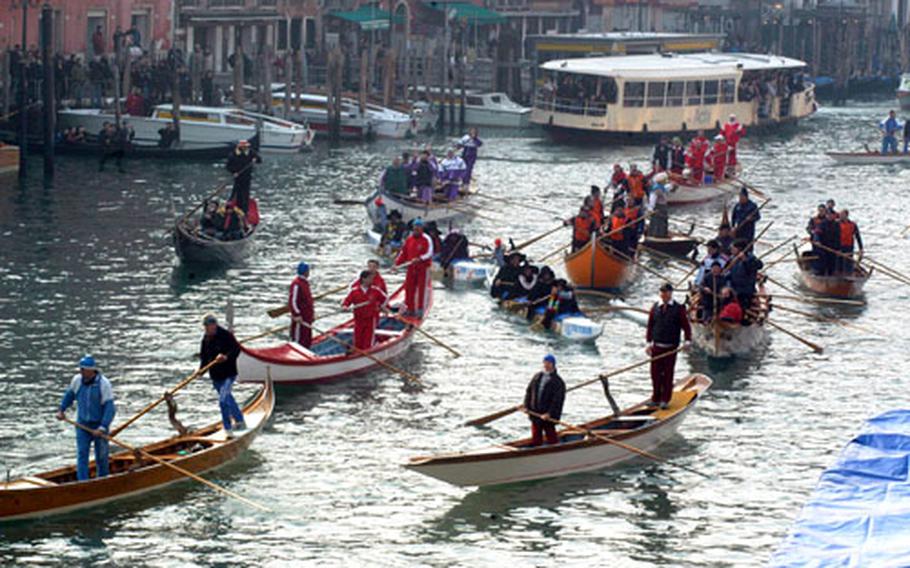
Witches and race participants mingle on the Grand Canal. (Kent Harris / S&S)
Witches normally aren’t considered part of the Christmas season, but they played a central role when Venice, Italy, wrapped up the holiday last week.
On Jan. 6, millions of Italian children celebrate Epiphany — the date marking the visit of the three wise men to the baby Jesus and traditionally the end of Christmas holiday — by finding candy in their stockings.
Those children who haven’t been good, in theory, find coal.
The candy and coal are distributed by la befana, “the witch” in Italian. And to mark the occasion in Venice, as they have for the past 20 years, about a dozen local men and women dressed as witches and took over the city’s main thoroughfare. They paddled along the Grand Canal, some tossing candy to the hundreds of onlookers — although many tourists in Venice that day had little idea of what was going on.
In fact, just about everyone was unsure of why men dress up as witches. Italians who were asked shrugged and said it was simply tradition. What the tradition was, no one seemed to know.
Following tradition, the participants paddled from San Toma until they reached the giant stocking of the Epiphany that hung from the Rialto Bridge.
In addition to the witches’ cruise, a race was held involving teams bedecked in colorful sweat clothes in hues from across the rainbow.
Other places in Italy also have special celebrations on Jan. 6. Many involve witches — or their parental helpers — hanging up stockings the night before and kids waking up to see if they’ve been good or bad.
Why witches? And just who is la befana? Like Santa Claus, her origins are a bit mysterious and probably date to customs before Christianity took firm hold in Europe.
There are several versions of how she came to deliver goodies to good children every year. One of them says the wise men stopped at her house while they were trying to find Jesus. They asked her to accompany them, but she declined.
Later, she regretted the decision and tried to find baby Jesus. She gave out candy to all the children she found in case one of them turned out to be him.
Another version has her finding Jesus, giving him gifts and being rewarded with a day each year during which she passes out goodies to all children.
In rural areas, witches were once reportedly burned to death on the day. Onlookers could tell whether the year would be a good one by which way the smoke blew. The staff at the tourism office assured visitors this year that no one was burned on Epiphany.
But modern ingenuity has added another layer of confusion. At least one shop in Venice sold candy that looked like lumps of coal, leaving the children who received it with a tough question of whether they had been good or bad.